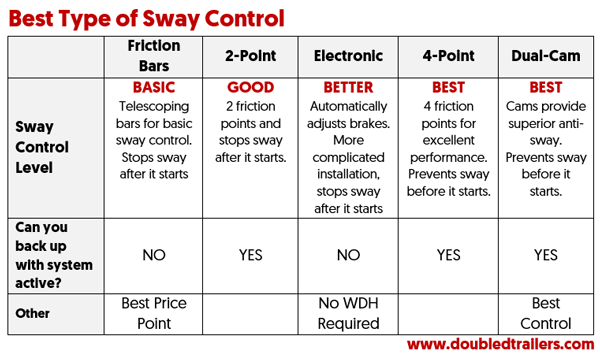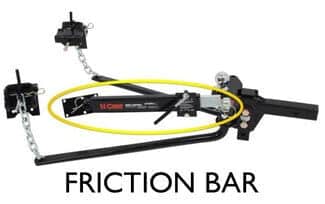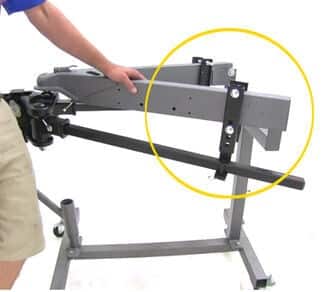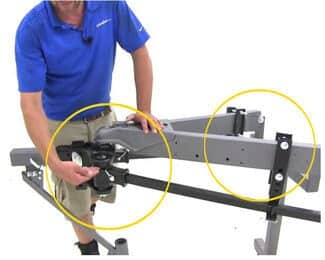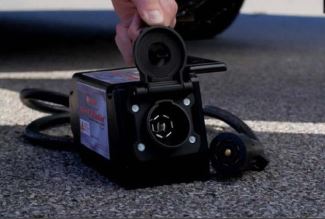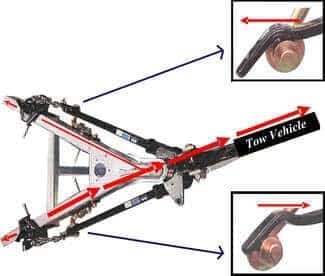What are Sway Bars and How Can They Help Horse Trailer Towing?
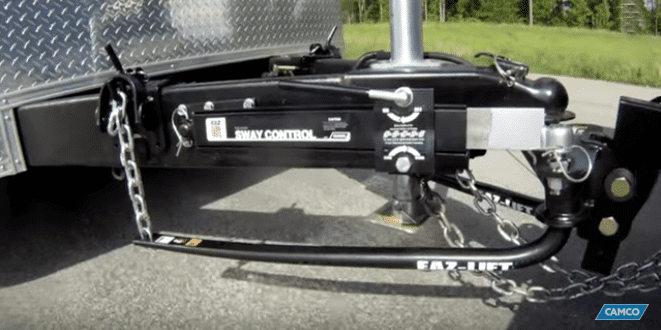
Horse trailer sway is when your trailer begins to move uncontrollably from side to side while driving down the highway. Not only is this fishtail movement unnerving, but it can also be incredibly dangerous. Too much sway causes you to lose control of your rig resulting in an accident.
That’s why it’s important to understand the factors that contribute to trailer sway. In this article, we’ll talk about the many reasons why your trailer might start to sway. We’ll also discuss five anti-sway options to keep your truck and trailer driving straight and true.
What Makes a Trailer Sway?
Horse trailers sway for a number of reasons, but the most common problem has to do with air flow. Your trailer’s tires might not have a firm enough grip on the road when a big gust of air hits its side. This wind causes the trailer to begin swaying from side to side.
Winds may be caused by traveling at very high speeds, high cross-winds, or the big gust from a passing 18-wheeler truck. The side of your trailer acts like a big sail and catches the air.
Now, why wouldn’t the tires have a firm enough grip? Poorly designed trailers that experience a lot of sway often do not have proper weight distribution. If the wheel axles are placed too far forward on the horse trailer, a reduced tongue weight results in a trailer which is more likely to sway.
Other issues that cause sway include under-inflated tires, an inadequate tow vehicle, traveling at too high of a speed especially in poor road conditions, and poor trailer suspension.
Prevent Sway Before It Happens
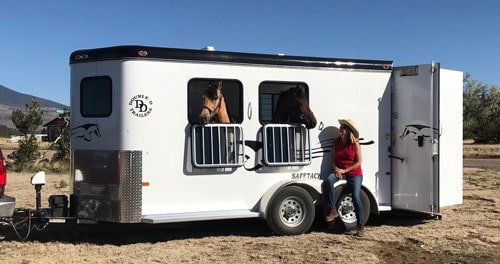 One of the best things you can do to prevent sway is to invest in a properly designed horse trailer. Here at Double D Trailers, we place the wheel axles far enough back that the tongue weight ends up being closer to 20% of the load. This design takes into account the unique nature of a horse trailers.
One of the best things you can do to prevent sway is to invest in a properly designed horse trailer. Here at Double D Trailers, we place the wheel axles far enough back that the tongue weight ends up being closer to 20% of the load. This design takes into account the unique nature of a horse trailers.
Unlike other bumper pull RVs or campers, horse trailers are naturally top heavy. In fact, horses illustrate this perfectly. Most of their mass is balanced high up on top of thin legs. Plus, you need to account for a trailer that may be traveling empty, partially, or fully loaded depending on how many animals you are transporting.
Our attention to this issue helps keep your truck and trailer moving straight and true while traveling on the highway. We always recommend you make sure your truck is well-suited to handle the load from your trailer. Check the towing capacity of your vehicle and hitch before assuming you’re good to go. To prevent sagging at the hitch, you may want to consider a weight distribution system to level out your rig.
How Sway Bars Can Help
Still, some horse trailers can experience sway and you may want to take extra precautions. In that case, there are a number of sway bar options to consider.
These specially designed bars are intended to keep bumper pull trailers pulling smoothly down the road, limiting or preventing sway. They create a better ride for your horses and a safer pulling situation for you by absorbing the sway your trailer would otherwise express as a fishtailing motion.
Sway bars are of three main categories: independent friction sway control, dependent sway control or active sway control.
Independent friction sway control uses a telescoping bar and friction pads to stop sway once it has begun. Dependent sway control systems come packaged as a part of a weight distribution hitch (WDH) and rely on friction or springs to keep the trailer in line.
Active sway control systems are also usually built into WDH, but instead of relying on friction to stop sway, active sway control uses cams to prevent sway from starting at all.
5 Types of Sway Control
1. Friction Bar (Independent friction sway control)
The least expensive sway bar option works well for towing smaller trailers. The friction bar attaches to your trailer frame on one end and to your weight distribution hitch on the other.
This telescoping bar provides tension to keep your trailer in line once sway begins. One drawback is that you’ll need to disconnect your friction bar before backing and maneuvering your trailer into a parking spot.
2. 2-Point Sway Control (Dependent sway control)
This type of sway control is built into your WDH. Brackets on either side of the trailer frame act as resting points for the spring bars for the weight distribution system. Friction when these bars move back and forth keeps the trailer in line once sway has started.
3. 4-Point Sway Control (Dependent sway control)
This system is similar to the 2-point sway control with the addition of two more friction points at the head of the WDH. This system combats sway before it begins rather than correcting it once it’s started.
4. Electronic Sway Control (Works without WDH)
This set up works without a weight distribution hitch. They work by activating your trailers brakes based on the degree of sway and the trailer’s speed. The installation is a bit more complicated. (It’s electric, after all!) Electronic sway control helps stop sway before it begins.
5. Dual-Cam Sway Control (Active sway control system)
A WDH with curved spring bars can work well with this type of sway control. Dual-cam stabilizers cradle these curved bars. When the spring bars move, they settle back into place at the base of the curve to stop sway before it starts. This, along with a 4-Point Sway Control, is one of the best ways to prevent sway from happening.
How to Know if You Need Sway Control?
Not every horse trailer is going to need sway control. In fact, we already explained that it’s not an issue when the trailer is well designed with a balanced load and properly placed axles.
However, you should be cautious when you first start driving your trailer. Double check that your tow vehicle and hitch are rated to handle your load. If your truck is overloaded, look into a WDH. Then, get up to speed slowly the first time and monitor how your trailer is behaving behind you.
What Brands of Sway Control Are Best?
We have not had to recommend sway control for any of our own customers. However, the Reese Friction Bar or Dual-Cam Systems come highly recommended.
The Equal-i-zer 4-Point hitch is also a top-notch WDH with sway control recommended by many top experts.
When you’re shopping for bumper pull horse trailers, trailers designed from the ground up will always distribute weight better than those made from a one size fits all model. The better the weight distribution, the easier your trailer will pull. If you have any questions about sway bars or safe horse trailer towing, you can contact Brad today.

